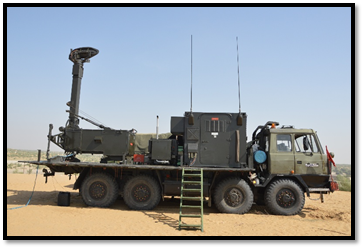In a defining moment for India’s defence preparedness, the indigenous Akashteer system played a pivotal role in neutralising Pakistan’s most intense coordinated air assault in recent times. During the night of May 9 and 10, when multiple drones and missiles targeted Indian military and civilian installations, it was Akashteer—the country’s automated Air Defence Control and Reporting System—that intercepted and eliminated every incoming threat.
Unlike traditional air defence responses, this was not about visible firepower or headline-making strikes. Akashteer worked silently and decisively. Designed and developed under the Atmanirbhar Bharat initiative, the system proved its mettle in real-time warfare, offering automated detection, tracking and engagement capabilities. It delivered a rapid response, integrating multiple radar and sensor platforms to assess threats and neutralise them without delay or error.
This advanced air defence solution stands in sharp contrast to Pakistan’s imported HQ-9 and HQ-16 systems, which reportedly failed to counter Indian offensives during Operation Sindoor. In that operation, Indian forces demonstrated an unprecedented level of coordination and speed, largely enabled by Akashteer’s battlefield intelligence and real-time decision-making ability.
Akashteer is more than just a defence system—it is the embodiment of a strategic shift in India’s military doctrine. From passive defence models to proactive, technology-driven retaliation, India has entered a new phase of warfare preparedness. The system provides a shared, real-time air picture to all units involved, from command centres to ground-based defence units. It allows precise engagement with hostile targets while ensuring complete safety for friendly forces operating in contested airspace.
What distinguishes Akashteer is its integration into India’s larger defence command infrastructure. As part of the C4ISR framework—Command, Control, Communications, Computers, Intelligence, Surveillance, and Reconnaissance—Akashteer functions in synergy with the Indian Army, Navy and Air Force. Its vehicle-mounted design ensures high mobility, allowing deployment even in the most active and volatile war zones.
The system links seamlessly with the Indian Air Force’s IACCS and the Navy’s TRIGUN network, creating a unified and coordinated defence front. This tri-service integration not only improves situational awareness but also significantly reduces the risk of friendly fire, ensuring fast and accurate retaliation.
Akashteer is a product of India’s growing defence manufacturing ecosystem. Under the Make in India programme, the country is rapidly moving towards self-reliance in defence production. India has set a target of ₹3 lakh crore in defence production by 2029. Currently, 65% of defence equipment is manufactured domestically—a reversal from earlier trends where imports dominated the sector. This transformation is powered by contributions from 16 Defence Public Sector Undertakings (DPSUs), over 430 licensed companies, and nearly 16,000 MSMEs, alongside private sector participation accounting for 21% of the output.
The indigenous defence portfolio now includes critical platforms such as the Dhanush and ATAGS artillery systems, Arjun Main Battle Tank, LCA Tejas, ALH, LUH, and a range of naval vessels including destroyers, corvettes and aircraft carriers. Akashteer stands tall among these as a symbol of India’s advanced technological capabilities and strategic clarity.
Global defence analysts have described Akashteer as a “seismic shift” in India’s approach to modern warfare. By developing and operationalising a fully indigenous and automated air defence network, India has joined an elite group of nations capable of real-time air threat assessment and response. Akashteer’s successful deployment during Operation Sindoor is seen as proof that India is not only capable of defending itself but also prepared to lead with innovation in future conflicts.














